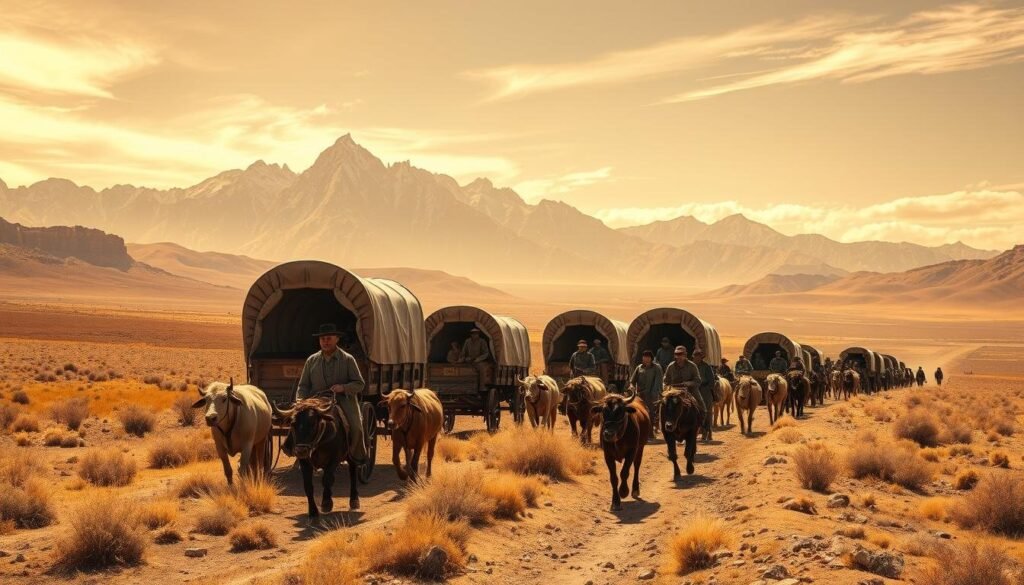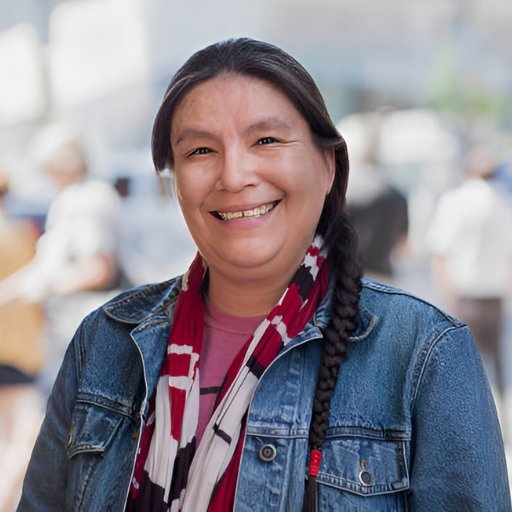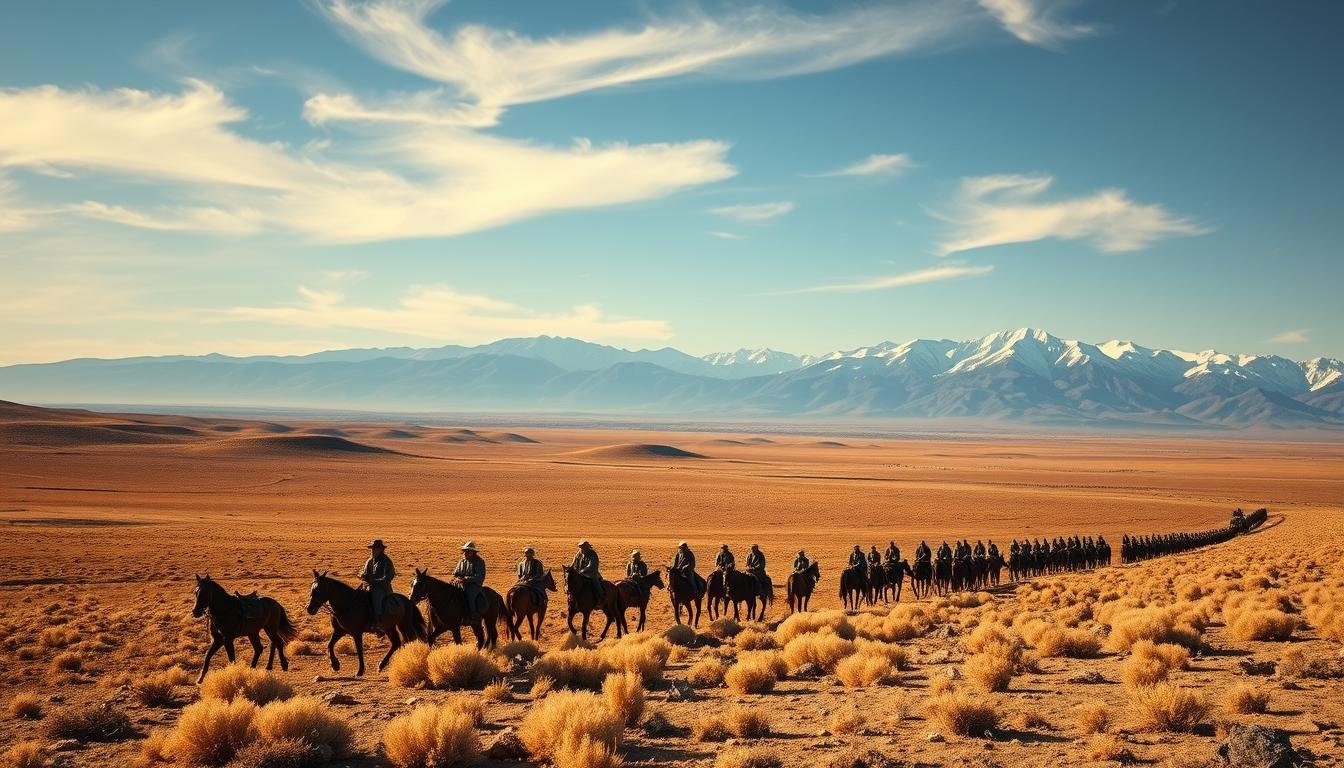Last updated on October 20th, 2025 at 11:12 am
Why Mormons Moved West? Have you ever wondered why Mormons moved to the West? This event was a key moment in American history. It changed the country’s religious and cultural scene.
The reasons for this move were complex. They faced persecution, economic struggles, and the need for religious freedom. Learning about their journey shows their strength and faith.
Discovering the Mormon migration history is like looking into the past. It shows the courage and belief of those who made this difficult journey. [Why Mormons Moved West?]
Contents
- 1 The Origins of Mormon Persecution
- 2 Why Did Mormons Move to the West?
- 3 The Mormon Exodus: Brigham Young’s Leadership
- 4 Establishing Zion in the Great Basin
- 5 Conclusion: Why Mormons Moved West?
- 6 FAQ
- 6.1 Why did the Mormons face persecution in the early days of their movement?
- 6.2 Who was the leader of the Mormon migration to the West?
- 6.3 What was the significance of the Great Basin to the Mormons?
- 6.4 What challenges did the Mormons face during their migration and settlement?
- 6.5 How did the Mormon migration impact American history and culture?
- 6.6 What is the legacy of Brigham Young’s leadership during the Mormon Exodus?
- 6.7 How did the Mormons establish their community in the Great Basin?
The Origins of Mormon Persecution
From the start, the Mormon community faced harsh persecution. This was due to religious, social, and economic reasons. The early days of Mormonism were filled with controversy and hostility.
Many factors led to this persecution. Religious differences were a big part. Mormons had beliefs and practices that were seen as odd and a threat to traditional Christianity.
Factors Contributing to Persecution
- Economic competition and resentment towards the growing Mormon community
- Political tensions arising from Mormon bloc voting and communal practices
- Social and cultural differences, including the practice of polygamy
These issues led to violent clashes and expulsions. Mormons were forced to move to new places. This constant displacement deeply affected the Mormon community. [Why Mormons Moved West?]
It shaped their identity and guided their future migrations. Knowing about the start of Mormon persecution helps us understand their journey west. It shows their strength and determination in the face of challenges.
Why Did Mormons Move to the West?
The Mormons moved west for a safer, more prosperous life. They faced religious persecution and economic hardship in the East. TheMormon westward movementwas their response, seekingreligious freedomand new chances.
Economic Opportunities
The Mormons sought economic chances in the West. They wanted a place to live and work without fear of persecution or poverty. The West offered fertile land, natural resources, and trade possibilities.
Their economic goals were linked to their faith. They aimed to build a self-sufficient community where they could freely practice their religion. TheMormon westward movementwas fueled by both economic and religious reasons.
Some key economic goals for the Mormons in the West included:
- Fertile land for agriculture
- Natural resources such as timber and minerals
- Opportunities for trade and commerce
- The potential for self-sufficiency and economic independence
By moving west, the Mormons built a thriving community. This community could support itself economically. It allowed them to practice their faith more freely, without fear of persecution or poverty.

In conclusion, the Mormon decision to move west was complex. It was driven by the quest forreligious freedomand economic opportunities. Understanding these reasons helps us appreciate the Mormon migration’s importance in American history.
The Mormon Exodus: Brigham Young’s Leadership
Brigham Young became the leader of the Mormon Church. He had to lead his followers to the West. You will see how his leadership and vision helped the Mormon pioneers on their journey.
Organizing the Exodus
Brigham Young was known for his careful planning and strong faith. He organized the Mormon Exodus into a well-planned effort. This included:
- Scouting parties to explore the route and find safe places.
- Preparing food, wagons, and other important supplies.
- Guiding the group spiritually through sermons and community activities.
Organizing the exodus was a big task. It needed careful planning and understanding of the challenges ahead. Brigham Young’s leadership helped thousands of Mormons migrate successfully.
| Aspect of Exodus | Description | Importance |
|---|---|---|
| Scouting Parties | Explored the route and identified safe havens. | Crucial for safe passage and settlement. |
| Logistical Preparations | Included food, wagons, and other essential supplies. | Essential for survival during the journey. |
| Spiritual Guidance | Provided through sermons and community activities. | Maintained community morale and cohesion. |
Brigham Young’s dream of a Mormon Zion in the Great Basin drove the exodus. His leadership helped the pioneers face physical challenges. It also gave them the spiritual strength to keep going.
Establishing Zion in the Great Basin
The Great Basin was a key destination for Mormon migration. It offered a chance to start anew, away from persecution. The Mormons saw it as a place to build a community free from troubles.
Settling the Great Basin was tough. The harsh environment made building homes and farms hard. The resilience of the Mormon settlers was key to their success.
They faced many challenges, including:
- Harsh weather conditions
- Limited resources
- Conflicts with Native American tribes
Despite these hurdles, the Mormons kept going. They were driven by the dream of creating Zion. Salt Lake City became their main base.
Building Salt Lake City was a big step. It involved:
- Surveying and planning the city layout
- Constructing homes, public buildings, and infrastructure
- Developing irrigation systems to support agriculture
The Mormons’ ability to adapt and innovate helped them thrive. They built a community that has left a lasting mark on the region. [Why Mormons Moved West?]
Conclusion: Why Mormons Moved West?
The Mormon migration to the West is a key moment in American history. It has shaped the religious and cultural scene of the United States. This journey shows the lasting impact of Mormon migration on Mormon history.
The Mormon pioneers, led by Brigham Young, found a new home in the Great Basin. This move helped the United States expand westward. Their journey is a symbol of a community’s strength and determination.
Today, the Mormon migration’s history is a big part of American culture. It shapes the Mormon community’s identity and practices. Reflecting on this event, we see the lasting legacy of Mormon migration in American religious history.
See Also: Is the Book of Mormon Fake? Exploring the Controversy
FAQ
Why did the Mormons face persecution in the early days of their movement?
The Mormons were persecuted because of their unique beliefs and practices. Their rapid growth was seen as a threat. Economic factors and misunderstandings also played a role.
Who was the leader of the Mormon migration to the West?
Brigham Young led the Mormon migration to the West after Joseph Smith’s death. He was key in organizing and guiding the pioneers. He helped establish a new home in the Great Basin.
What was the significance of the Great Basin to the Mormons?
The Great Basin, where Salt Lake City is, was chosen by Brigham Young. It was a place where they could live freely, away from interference. [Why Mormons Moved West?]
What challenges did the Mormons face during their migration and settlement?
The Mormons faced many challenges, like harsh weather and disease. They also had conflicts with Native American tribes. Adapting to a new environment was tough.
How did the Mormon migration impact American history and culture?
The Mormon migration helped expand the United States. It contributed to the growth of new territories. It also influenced American culture, especially in religious freedom and the settlement of the West.
What is the legacy of Brigham Young’s leadership during the Mormon Exodus?
Brigham Young’s leadership was crucial for the Mormon migration. His vision and organizational skills helped the community thrive. They overcame challenges and established a successful settlement.
How did the Mormons establish their community in the Great Basin?
The Mormons built their community through planning, hard work, and cooperation. They constructed homes, farms, and infrastructure. They also developed a system of governance based on their beliefs.

Ramona Pearson from the USA is an experienced religious researcher and writer with over 10 years studying Mormon history, beliefs, and culture. She creates accurate, insightful content to educate and inform curious readers worldwide.

